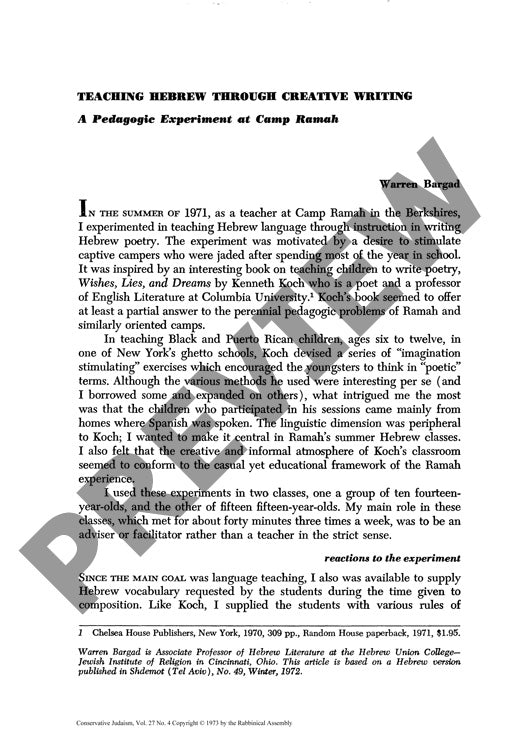Teaching Hebrew Through Creative Writing
Couldn't load pickup availability
Creative writing workshops can dramatically enhance Hebrew language acquisition among adolescent learners, as demonstrated by a pioneering 1971 experiment at Camp Ramah. Inspired by Kenneth Koch's poetry teaching methods with bilingual children, the experiment adapted creative techniques for an informal, immersive Hebrew educational setting. Two groups of fourteen- and fifteen-year-old students participated in thrice-weekly forty-minute sessions focused on imagination-stimulating exercises, metaphorical usage, and personal poetic expression. The methodology incorporated diverse creative prompts including simile construction, collaborative poem creation, and multimedia-inspired writing through pictures, music, and dance. Students showed marked improvements in Hebrew vocabulary acquisition, idiomatic expression usage, and spelling accuracy, though some participants experienced diminished enthusiasm when faced with structured creativity exercises and age-inappropriate activities. The informal, facilitative teaching approach generated stronger engagement than traditional language instruction methods, successfully expanding students' Hebrew linguistic competency while cultivating aesthetic awareness and literary sensitivity. These results establish creative writing as an effective pedagogical tool for second language acquisition, particularly in immersive cultural settings, demonstrating how artistic expression can simultaneously strengthen linguistic proficiency and cultural connection among learners.

More Information
-
Physical Description
-
Publication Information
Published 1973
ISBN
-
Publication Credits
Warren Bargad

